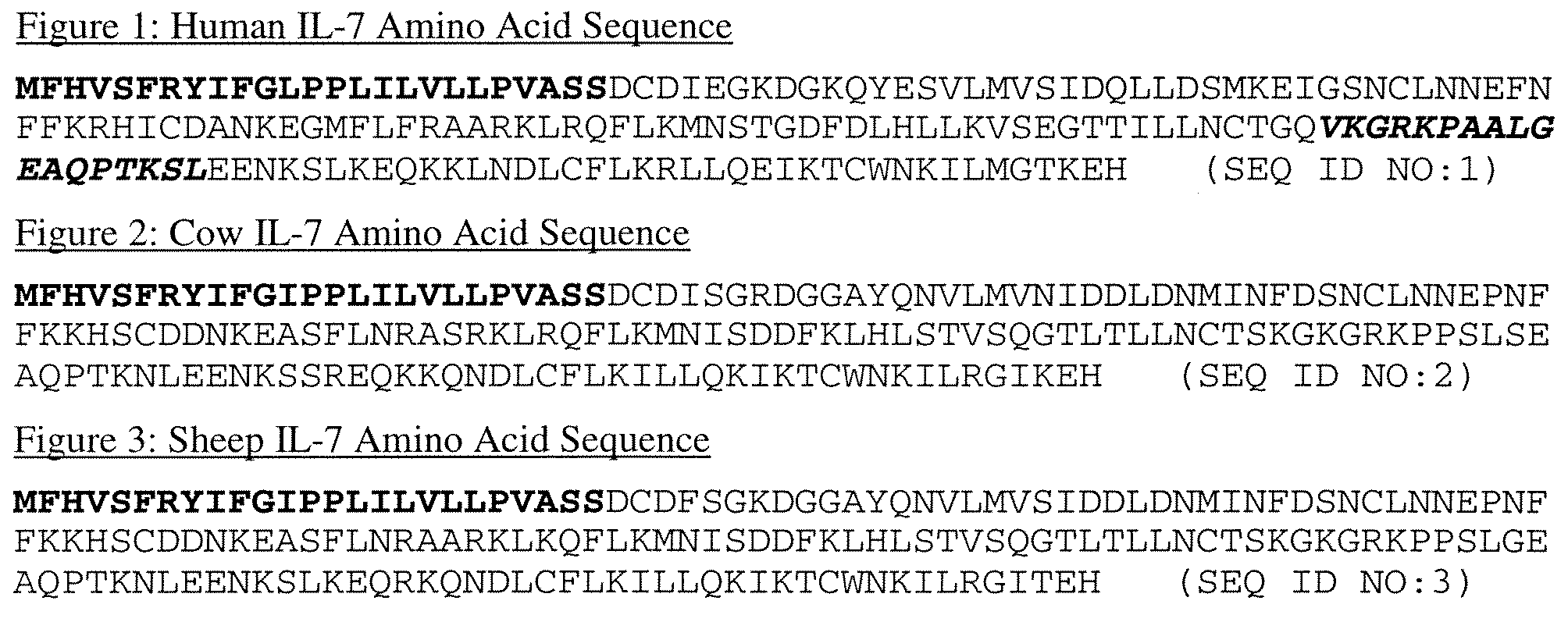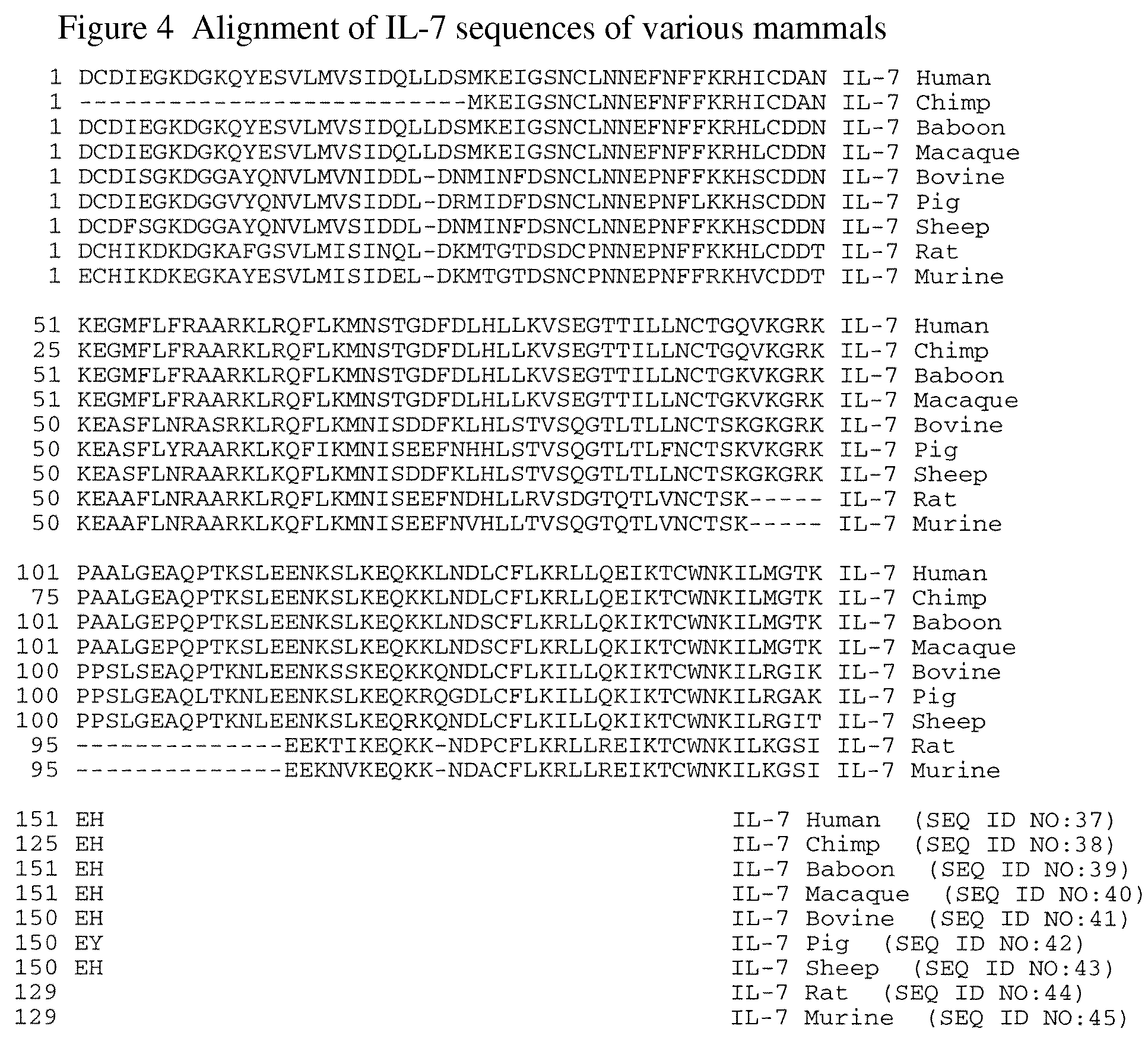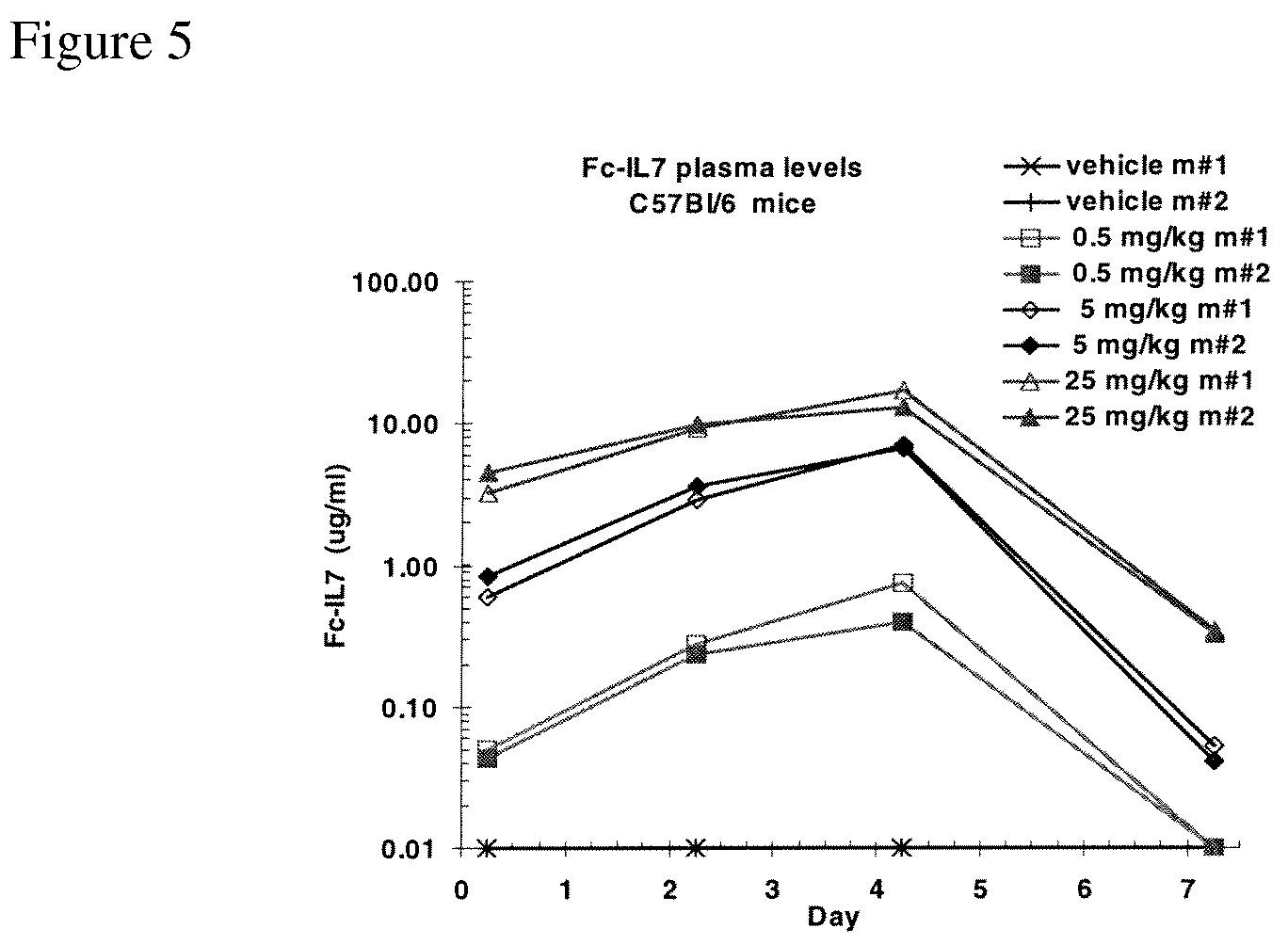IL-7 variants with reduced immunogenicity
a technology of immunogenicity and variants, applied in the field of il7 moieties, can solve problems such as the potential long-term consequences for patient health
- Summary
- Abstract
- Description
- Claims
- Application Information
AI Technical Summary
Benefits of technology
Problems solved by technology
Method used
Image
Examples
example 1
Identification of T-cell Epitopes by Computational Methods
[0094]According to the invention, epitopes of IL-7 can be modified using methods for introducing mutations into proteins to modulate their interaction with the immune system. These methods are similar to those disclosed in U.S. Published Patent Application No. 2003-0166877. According to the invention, known methods in the art that can be adapted according to the invention include those described in the prior art (WO 92 / 10755 and WO 96 / 40792 (Novo Nordisk), EP 0519 596 (Merck & Co.), EP 0699 755(Centro de Immunologia Moelcular), WO 98 / 52976 and WO 98 / 59244 (Biovation Ltd.) or related methods.
[0095]Advantageous mutant proteins, however, can be obtained if the identification of said epitopes is realized by the following method which is described herewith in detail and applied to IL-7. There are a number of factors that play important roles in determining the total structure of a protein, polypeptide or immunoglobulin. First, the...
example 2
In Vitro Analysis of IL-7 Derived Peptides as Potential CD4+ T Helper Cell Epitopes by Unfractionated PBMC Cultures
[0145]Based on in silico predictions that sequences surrounding N-linked glycosylation sites of the IL-7 protein are immunogenic, peptides encompassing these regions, spanning for example Leu63 to Ser71 (LRQFLKMNS (SEQ ID NO:48)) or Ile88 to Val96 (ILLNCTGQV (SEQ ID NO:52)) in mature human IL-7 protein, are analyzed for their immunogenicity, which is measured by their ability to induce T-cell proliferation in vitro. In essence, PBMCs isolated from human blood are incubated with individual overlapping 15-mer peptides, and proliferative responses are measured by 3H-thymidine incorporation. In principle, T-cells within the mixture of PBMCs will only proliferate if they recognize individual peptide-MHC complexes on autologous APCs (antigen presenting cells), and thus proliferation is an indication of peptide immunogenicity.
[0146]For example, 15-mer peptides that are stagger...
example 3
Mapping of CD4+ T Helper Cell Epitopes using Differentiated Human Dendritic Cells (DCs) in Vitro
[0151]Mature dendritic cells (DCs) are potent antigen-presenting cells (APCs) that present antigenic peptides or whole proteins to T-cells efficiently. Isolated DCs, pulsed with antigenic peptides in vitro, are used to induce primary T-cell responses that can be measured in in vitro proliferation assays. Differentiated DCs are generated, for example by the following procedure: first, human monocytes are generated by allowing PBMCs to adhere to plastic tissue culture flasks or by purifying CD14+ PBMCs with magnetically labeled antibodies (Miltenyi Biotec, Auburn, Calif.). The purified monocytes (0.5 to 1.5×106 cells / ml) are then cultured in AIM V media (GIBCO BRL, Grand Island, N.Y., U.S.A.) containing 1000 U / ml GM-CSF (Endogen; Woburn, Mass.) and 500 U / ml IL-4 (Endogen; Woburn, Mass.) for 3 days. Subsequently, these immature DCs are pulsed with 5 μg / ml of experimental or control peptides ...
PUM
| Property | Measurement | Unit |
|---|---|---|
| pH | aaaaa | aaaaa |
| pH | aaaaa | aaaaa |
| pH | aaaaa | aaaaa |
Abstract
Description
Claims
Application Information
 Login to View More
Login to View More - R&D
- Intellectual Property
- Life Sciences
- Materials
- Tech Scout
- Unparalleled Data Quality
- Higher Quality Content
- 60% Fewer Hallucinations
Browse by: Latest US Patents, China's latest patents, Technical Efficacy Thesaurus, Application Domain, Technology Topic, Popular Technical Reports.
© 2025 PatSnap. All rights reserved.Legal|Privacy policy|Modern Slavery Act Transparency Statement|Sitemap|About US| Contact US: help@patsnap.com



